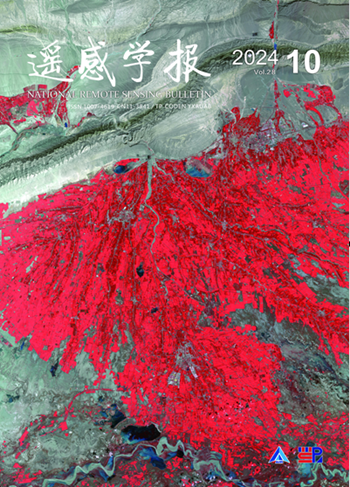Adaptive methods of detecting environmental changes using multispectral satellite images on the Earth for example territory Solotvyno
引用次数: 1
Abstract
The methods for detecting environmental changes using two multispectral multispectral space images of the Earth, which can be used to assess changes in the ecological and geological environment to control the dynamics of processes in real time, in order to prevent environmental emergencies. The creation and operation of a system of continuous geoecological monitoring based on space information involves the detection of relative changes in the environment on two multispectral space images of the Earth, obtained after a certain period of time. To do this, it is necessary to develop and apply adaptive methods (indices) for detecting relative changes. Three methods are proposed that are adapted to specific images to find the optimal solution that maximizes the relative changes in two different time multispectral space images of the Earth. The first method selects one optimal channel from all channels of the space image, the second method - two optimal channels from all channels and the third - four optimal channels from all channels. There are known methods that assess the presence or absence of changes in two space images at different times, but they do not provide information about the direction of changes. The proposed indices can take positive and negative values, reflecting the trend of changes on the ground. The negative values of the indices obtained in the area near the village of Solotvyno, Tyachiv district, Zakarpattia region, correspond to the areas with the most dynamic changes in the environment of such exogenous processes as karst funnels and lakes, and positive values correspond to increasing vegetation areas. The results of comparing the application of the change detection index on two different multispectral space images of the Earth on four, two channels and one channel showed that increasing the number of channels can give a more reasonable picture of changes, but to concretize these changes requires ground-based observations.利用地球上的多光谱卫星图像探测环境变化的自适应方法,例如Solotvyno地区
利用地球两幅多光谱空间图像检测环境变化的方法,可用于评估生态和地质环境的变化,实时控制过程的动态,以防止环境突发事件的发生。基于空间信息的地球生态连续监测系统的创建和运行涉及到在一定时间后获得的两幅地球多光谱空间图像上检测环境的相对变化。为此,有必要开发和应用自适应方法(指标)来检测相对变化。提出了三种适合于特定图像的方法,以寻找两幅不同时间的地球多光谱空间图像中相对变化最大的最优解。第一种方法从空间图像的所有通道中选择一个最优通道,第二种方法从所有通道中选择两个最优通道,第三种方法从所有通道中选择四个最优通道。有一些已知的方法可以评估两个空间图像在不同时间是否存在变化,但它们不能提供有关变化方向的信息。所提出的指标可以取正值和负值,反映实地的变化趋势。在Zakarpattia地区Tyachiv地区Solotvyno村附近的指数为负值,对应的是喀斯特漏斗和湖泊等外源过程环境变化最动态的区域,而正值对应的是植被面积的增加。对比了变化检测指数在四通道、二通道和一通道两种不同地球多光谱空间图像上的应用结果表明,增加通道数量可以得到更合理的变化图景,但要具体化这些变化需要地面观测。
本文章由计算机程序翻译,如有差异,请以英文原文为准。
求助全文
约1分钟内获得全文
求助全文
来源期刊

遥感学报
Social Sciences-Geography, Planning and Development
CiteScore
3.60
自引率
0.00%
发文量
3200
期刊介绍:
The predecessor of Journal of Remote Sensing is Remote Sensing of Environment, which was founded in 1986. It was born in the beginning of China's remote sensing career and is the first remote sensing journal that has grown up with the development of China's remote sensing career. Since its inception, the Journal of Remote Sensing has published a large number of the latest scientific research results in China and the results of nationally-supported research projects in the light of the priorities and needs of China's remote sensing endeavours at different times, playing a great role in the development of remote sensing science and technology and the cultivation of talents in China, and becoming the most influential academic journal in the field of remote sensing and geographic information science in China.
As the only national comprehensive academic journal in the field of remote sensing in China, Journal of Remote Sensing is dedicated to reporting the research reports, stage-by-stage research briefs and high-level reviews in the field of remote sensing and its related disciplines with international and domestic advanced level. It focuses on new concepts, results and progress in this field. It covers the basic theories of remote sensing, the development of remote sensing technology and the application of remote sensing in the fields of agriculture, forestry, hydrology, geology, mining, oceanography, mapping and other resource and environmental fields as well as in disaster monitoring, research on geographic information systems (GIS), and the integration of remote sensing with GIS and the Global Navigation Satellite System (GNSS) and its applications.
 求助内容:
求助内容: 应助结果提醒方式:
应助结果提醒方式:


